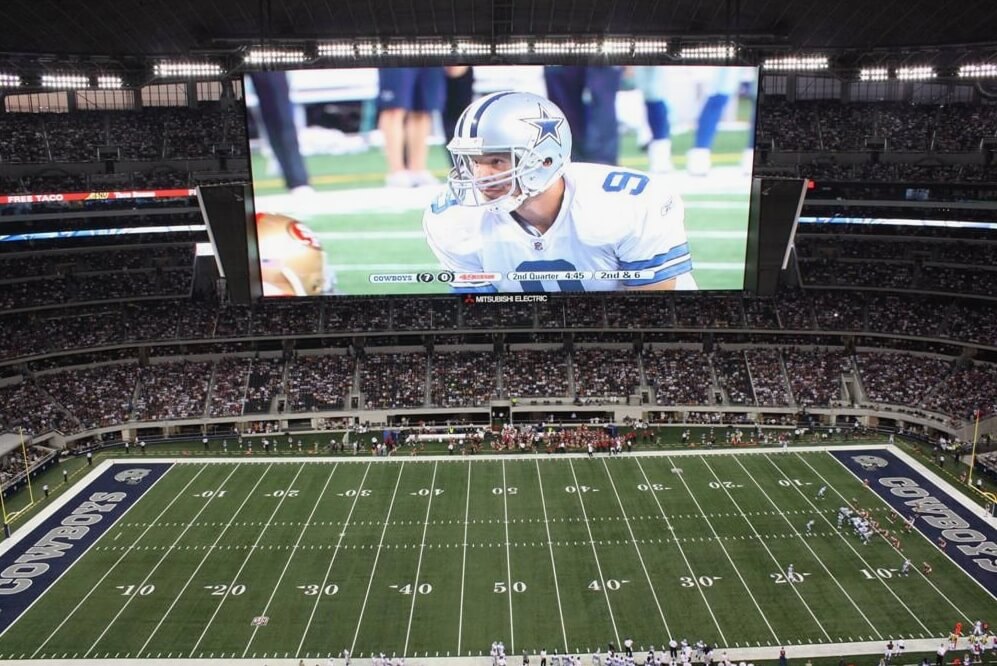Table of Contents
1. Definition of Sports Stadium LED Display Screens
2. Role of LED Display Screens in Sports Stadiums
3. Factors to Consider When Choosing Sports Stadium LED Display Screens
4. LED Display Screens and Solutions for Sports Stadiums

In modern sports events, LED display screens have become an indispensable and vital component. Whether in large stadiums or small sports venues, LED display screens play a crucial role in providing audiences with rich audiovisual experiences, enhancing the atmosphere and spectacle of the matches. These screens are not merely tools for conveying information but also serve as vibrant focal points in the arena. Below are some important definitions, roles, and factors to consider regarding LED display screens in sports stadiums.
1. Definition of Sports Stadium LED Display Screens
Sports Stadium LED display screens are large display devices manufactured using LED technology, used to broadcast live match action, advertising information, score statistics, and other important event content inside and outside sports venues. These screens typically feature high brightness, high definition, and wide viewing angles to ensure clear visibility of screen content from any location. Here are commercial LED screen technologies, benefits and selection guide.

2. Role of LED Display Screens in Sports Stadiums
LED display screens play a crucial role in sports venues. They not only provide audiences with real-time match information, score updates, and schedule arrangements but also enhance the viewing experience and create an exciting atmosphere. Additionally, LED display screens serve as an important source of advertising revenue for sports venues, providing sponsors with a platform to showcase their brands and products. Why do brands prefer LED display advertising?
3. Factors to Consider When Choosing Sports Stadium LED Display Screens
A. Size and Resolution: The scale of the sports stadium determines the size and resolution of the display screens. Large sports venues typically require high-resolution, large-sized screens to ensure clear visibility of content for the audience.
B. Brightness and Contrast: Outdoor LED display screens need to have high brightness to cope with direct sunlight, while contrast determines the clarity of displayed content. How to adjust the brightness and contrast of LED display?
C. Color Performance: Sports events often involve colorful visuals and advertisements, so the color performance of the display screens needs to be rich and accurate.
D. Durability and Stability: Display screens in sports venues need to withstand frequent use and various weather conditions, making durability and stability essential.
E. Maintenance and Management: LED display screens require regular maintenance and management. Choosing products with simple maintenance and remote monitoring capabilities can reduce long-term maintenance costs.
4. LED Display Screens and Solutions for Sports Stadiums

A. Large Fixed Screens: Large fixed screens are the most common type of display screens in sports venues. They are usually located on one side or behind the venue, providing audiences with a comprehensive visual experience. These screens need to have high definition, high refresh rates, and excellent color performance to showcase the highlights of the matches.

B. Outdoor Perimeter Advertising Screens: Outdoor perimeter advertising screens refer to LED display screens surrounding the exterior of sports venues. They not only provide match information to the audience but also serve as a platform for advertising, increasing the revenue streams of sports venues. What is the difference between indoor LED display and outdoor LED display?

C. Ribbon Screens in Sports Stadiums: Ribbon screens hang above the sports stadium, displaying real-time match information, advertising content, or creating a special atmosphere, providing audiences with a unique visual experience.

D. Scoreboard Screens: Scoreboard screens are one of the most important display devices in sports venues. They are usually located in prominent positions within the venue, providing real-time updates on match scores, foul counts, and other key information to ensure audiences stay informed about the match dynamics. Here are basketball LED scoreboard types and prices.
In summary, LED display screens in sports stadiums are not only essential equipment for modern sports events but also innovative solutions for enhancing the atmosphere, spectacle, and commercial value of sports venues. Choosing the right LED display screen products and solutions will bring even more exciting and immersive viewing experiences to sports events.





